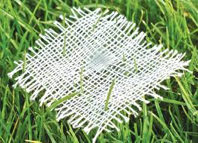Who doesn’t love the sun-kissed mornings and a full charged phone? If you are thinking what the connection between the two is, you are just to explore something which will surely change your perception about what all that sunshine does! From the days of 1950s when large silicon panels were developed to the tiny solar cells in today’s everyday objects, solar energy has become more resourceful, micro in form and more omnipresent.
 |
 |
Wearing the Solar Panels
The passion for solar innovation is not new and research for solar charged textiles first took full pace in 2001 when researchers tried to create a solar component that is workable, breathable and flexible. Solar fabrics thus came to inception and since then have been integrated into stadium covers, carports and even wearable art.
The way we power our world can completely get transformed with the coming together of textiles and solar tech, which means you can have around you everything from weave-able solar cells to solar dyes, from handbags to smart houses crafted from solar fabrics.
Imagine clothing that charges your phone and spares you from the burden of carrying a portable power bank, or think of awnings that can power streetlights or curtains that can cut a home’s power consumption. To our surprise, research has made all such things possible.
Moreover, military men, emergency service crews or outdoorsmen are likely to get maximum benefit as they all require lightweight power sources to move with them.
How F-A-R has come the S-O-L-A-R
Huisheng Peng of Fudan University in Shanghai has developed polymer solar cells that could be woven into textiles. The most prevalent solar cell is crystalline silicon while polymer cells are lightweight, flexible and easy to create.
The interwoven metal wire of his solar cell textile is coated with an active polymer that can absorb sunlight, titanium dioxide nanotubes for conducting electrons and another active polymer to conduct the holes. Both the sides of the textiles can be illuminated and it contains efficiency of 1.08% which varies by less than 0.03% after 200 cycles of bending.
Based in Brooklyn, N.Y., Pvilion designs and manufactures flexible PV solar structures and products by keeping a tap on solar technology industry. With an experience of two decades, it has in its portfolio everything ranging from solar-powered charging stations to solar-powered curtains, building facades, clothing and more. This NYC-based startup is rethinking the waysthat fabric and solar can power the future through its range of products like a tote bag that can charge your phone, a coffee cart that generates its own electricity, curtains that produce electricity to power the lighting in an entire building.
Another major contribution has been done in form of solar-powered filaments for wearable. Jayan Thomas, an Associate Professor working in Nano Science Technology Department at the University of Central Florida has created ribbon-like device that captures and stores energy. It can be intertwined through a winter coat, T-shirt or any other clothing to power a number of things.
